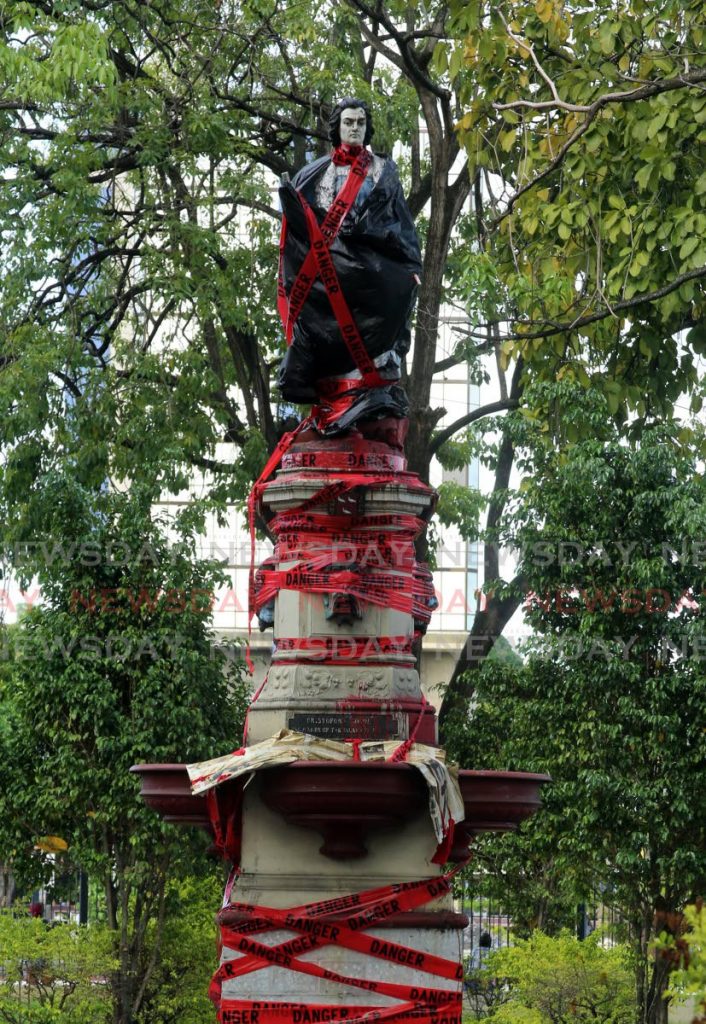No to racism

DR ERROL N BENJAMIN
THE FOOTBALL ad in the English Premier League against racism as the most flagrant form of domination/discrimination of one group over another is as poignant as "taking the knee," “say no to racism” and the like.
But to the insightful, such rhetoric is so much at variance with the reality.
For, from the beginning, the idea of “difference” has been central to nature of which we as humans are a part.
The birds and the bees gravitate towards their own groups as much as the dolphins and the rays in the ocean, and trees naturally huddle with their own kind, pines together in northern climes and the heavy deciduous similarly so in the tropics.
But that harmony is often disrupted when lions et al lay claim to territory against all intruders, often leading to violence and death, and even when trees encroach too closely, growth becomes stunted because of the lack of space and sunlight. The original plan, seemingly, would have been harmony, peaceful co-existence if you will, but the Darwinian notion of “survival of the fittest,” even as it was derived from the animal kingdom, seems to apply to all nature, once the issue of “domination” arises.
And humans as part of nature, are no exception. Originally we began as a homogeneous group, but “difference” from multiple angles – ethnic, economic, social and political, to use broad categories – began to generate the idea of “dominance.” Starting with the caveman who clubbed his way to that dominance, the history of the world has had that desire to dominate at the centre of its existence, first with ethnic groups laying claim to a kind of racial superiority, notably in the 16th century when such discourse was used to justify an economic enterprise in the New World with men such as Christopher Columbus seeking to validate the search for gold in terms of civilising the native.
Later such an ideology of racial superiority became the basis of an 18th-century Enlightenment philosophy which, on measuring “personhood” against the yardstick of reason, located the slave on the plantation at the lowest end of the scale.
This legacy continued in the idea of empire and imperial responsibility in the 19th century and in the present, in the form of American imperialism. With political independence and the rise of nations, this idea of “dominance” persisted, spawning hegemonic ambitions which would give rise to World Wars I and II inter alia, and currently playing itself in the US/China/USSR Cold War tensions.
And it did not end there. Even within nations this desire to dominate reared its ugly head in the phenomenon of “class,” with its social and economic differentiations, and in India, in the idea of caste giving difference and its attendant discrimination a religious dimension. History seems to suggest that the desire to dominate is the very essence of human existence.
And I could go on and on and on, but lack of space forbids me. But it is enough to illustrate the stark variance between the call to say no to racism and the essence of what we are as humans, both at the national and individual levels.
Multiculturalism as political counter to this obsessive desire to dominate among nations crept in for a while, but is clearly on the wane, symbolised in the new national thrust in the US under Trump.
Today in our country the peaceful co-existence between the two races is laudable, but that is merely the façade to the scourge of racism ingrained in our politics which lies beneath. There have been attempts at racial unity, as with Brother Marvin and his daughter’s hauntingly beautiful voices in Jahaji Bhai resonating across the Savannah some time aback in a Calypso Monarch competition, calling for unity between the two races; but the judges in the competition scoffed at the gesture. Maybe the historical fact of the two races meeting under the Indian jhandi was erroneous, but the judges’ inherent racism blinded them to the artistically pure idea of a call to racial unity.
But there is hope yet for redemption in this country. Dara Healey’s article in the Newsday of November 14, the East Indian Mission, would have been, indeed, illuminating to these naysayers to racial unity, for, in my humble opinion, there has never been before a more sincere, but informed attempt to authenticate and syncretise African and East Indian traditions.
In this June 20, 2020 the statue of Christopher Columbus is found defaced by unknown protesters against the legacy of Columbus' role in the decimation of the First Peoples and racism in TT. FILE PHOTO/SUREASH CHOLAI


Comments
"No to racism"